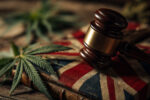4 Treatment Options for Managing Penile Lichen Sclerosus

Lichen sclerosus is a chronic inflammatory skin condition that can affect the genital region, including the penis in men. It often causes persistent discomfort, including itching, pain, and skin changes such as thinning and scarring. While the exact cause remains unknown, factors such as hormonal imbalances, genetic predisposition, immune dysfunction, and viral infections may contribute to its development. The severity of symptoms and their impact on quality of life can vary widely. Management depends on the extent of the condition and may include topical corticosteroids, phototherapy, or surgery in more advanced cases. Lifestyle changes and home remedies can also help alleviate symptoms and support ongoing treatment.
1. Topical Corticosteroids
The first step in treating lichen sclerosus in men is to use cutaneous corticosteroids. They help with pain, burning, and stinging sensations by significantly lowering inflammation. Doctors often say to use a thick lotion or ointment directly on the affected areas. The patient must apply the treatment based on the severity of their condition and their individual response. Take these medicines exactly as your doctor tells you to avoid skin irritation. Regular checks help you track how you’re doing and find problems like thin skin. Follow the plan and see the doctor often for the best care and long-term comfort.
2. Phototherapy
Another technique to treat the disease is via phototherapy, which uses UV light. It makes the skin less swollen and changes how the immune system works. This approach speeds up recovery and lowers pain and stiffness. People use this approach when topical corticosteroids don’t work. There may be bad side effects, or there may be a need to cover a lot of ground. In therapeutic sessions, narrow-band UV-B radiation is controlled. Usually, there are two sessions a week. Short-term side effects like redness, swelling, and dryness normally disappear independently. To keep patients safe and ensure therapy works in the long term, specialists must constantly check on them.
3. Surgery
Surgery is usually done in dire situations. Alternatively, surgery becomes necessary when medical methods prove ineffective or complicate matters. If scarring prevents phimosis, urethral strictures, or large deformities, surgery is the only option. What requires fixing determines the procedure. Circumcision has helped many people prevent foreskin growth. Having several scars elsewhere may require excisional surgery with skin grafting or flap techniques to restore normalcy. Many of these illnesses are surgically treatable. Many use it after less intrusive treatments fail. After surgery, you must take care of yourself to recover swiftly and get healthy.
4. Lifestyle and Home Remedies
Lifestyle modifications and home remedies can lessen daily discomfort in addition to medical therapy. Personal hygiene is essential. Dry your skin after washing with warm water and mild soap. The procedure prevents redness and irritation. Air-flowing cotton trousers keep you dry and cool. Avoid harsh soaps and perfumed items that will enrage you. Daily use of barrier creams and moisturiser keeps skin supple and flexible and prevents it from drying out and splitting. Learning to relax may help you manage stress, which can worsen skin issues. These extras don’t replace medical care, but they improve your mood and complement therapy.









